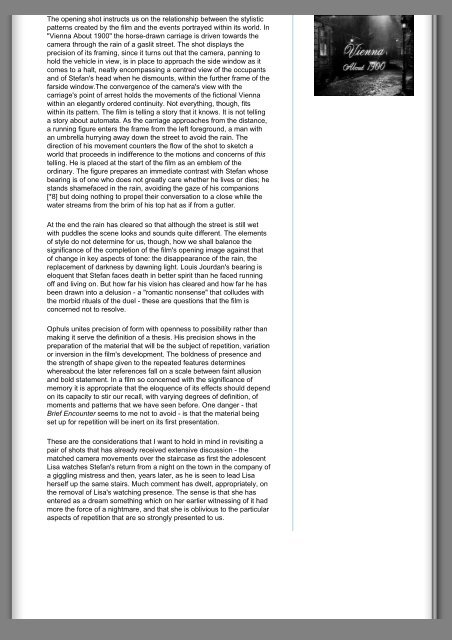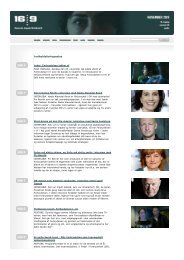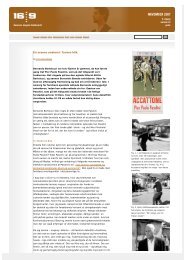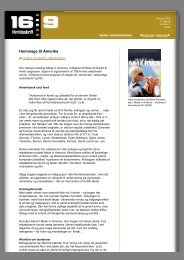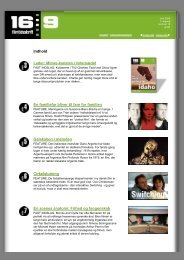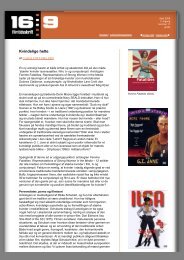Create successful ePaper yourself
Turn your PDF publications into a flip-book with our unique Google optimized e-Paper software.
The opening shot instructs us on the relationship between the stylisticpatterns created by the film and the events portrayed within its world. In"Vienna About 1900" the horse-drawn carriage is driven towards thecamera through the rain of a gaslit street. The shot displays theprecision of its framing, since it turns out that the camera, panning tohold the vehicle in view, is in place to approach the side window as itcomes to a halt, neatly encompassing a centred view of the occupantsand of Stefan's head when he dismounts, within the further frame of thefarside window.The convergence of the camera's view with thecarriage's point of arrest holds the movements of the fictional Viennawithin an elegantly ordered continuity. Not everything, though, fitswithin its pattern. The film is telling a story that it knows. It is not tellinga story about automata. As the carriage approaches from the distance,a running figure enters the frame from the left foreground, a man withan umbrella hurrying away down the street to avoid the rain. Thedirection of his movement counters the flow of the shot to sketch aworld that proceeds in indifference to the motions and concerns of thistelling. He is placed at the start of the film as an emblem of theordinary. The figure prepares an immediate contrast with Stefan whosebearing is of one who does not greatly care whether he lives or dies; hestands shamefaced in the rain, avoiding the gaze of his companions[*8] but doing nothing to propel their conversation to a close while thewater streams from the brim of his top hat as if from a gutter.At the end the rain has cleared so that although the street is still wetwith puddles the scene looks and sounds quite different. The elementsof style do not determine for us, though, how we shall balance thesignificance of the completion of the film's opening image against thatof change in key aspects of tone: the disappearance of the rain, thereplacement of darkness by dawning light. Louis Jourdan's bearing iseloquent that Stefan faces death in better spirit than he faced runningoff and living on. But how far his vision has cleared and how far he hasbeen drawn into a delusion - a "romantic nonsense" that colludes withthe morbid rituals of the duel - these are questions that the film isconcerned not to resolve.Ophuls unites precision of form with openness to possibility rather thanmaking it serve the definition of a thesis. His precision shows in thepreparation of the material that will be the subject of repetition, variationor inversion in the film's development. The boldness of presence andthe strength of shape given to the repeated features determineswhereabout the later references fall on a scale between faint allusionand bold statement. In a film so concerned with the significance ofmemory it is appropriate that the eloquence of its effects should dependon its capacity to stir our recall, with varying degrees of definition, ofmoments and patterns that we have seen before. One danger - thatBrief Encounter seems to me not to avoid - is that the material beingset up for repetition will be inert on its first presentation.These are the considerations that I want to hold in mind in revisiting apair of shots that has already received extensive discussion - thematched camera movements over the staircase as first the adolescentLisa watches Stefan's return from a night on the town in the company ofa giggling mistress and then, years later, as he is seen to lead Lisaherself up the same stairs. Much comment has dwelt, appropriately, onthe removal of Lisa's watching presence. The sense is that she hasentered as a dream <strong>som</strong>ething which on her earlier witnessing of it hadmore the force of a nightmare, and that she is oblivious to the particularaspects of repetition that are so strongly presented to us.


